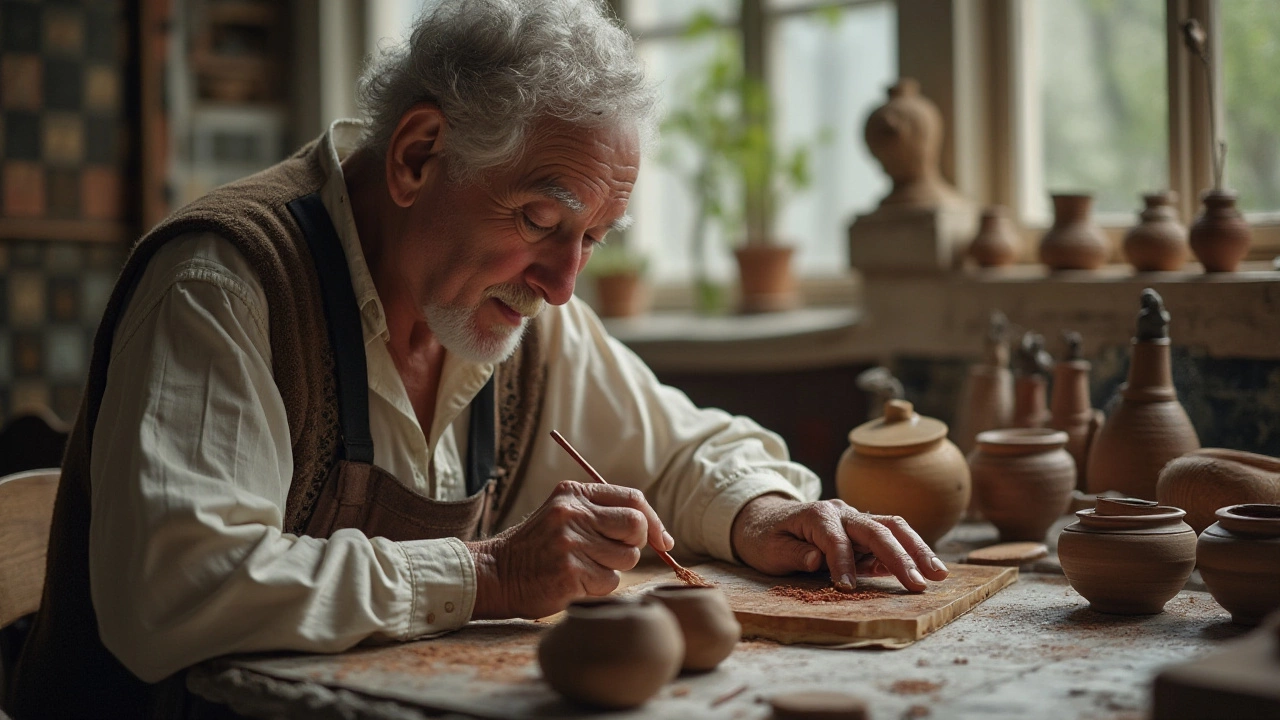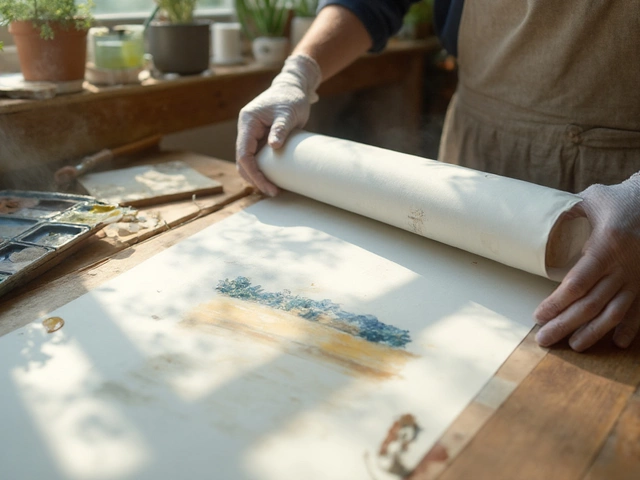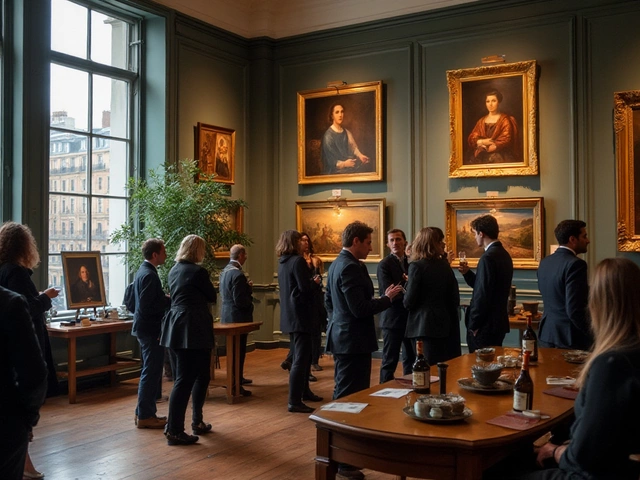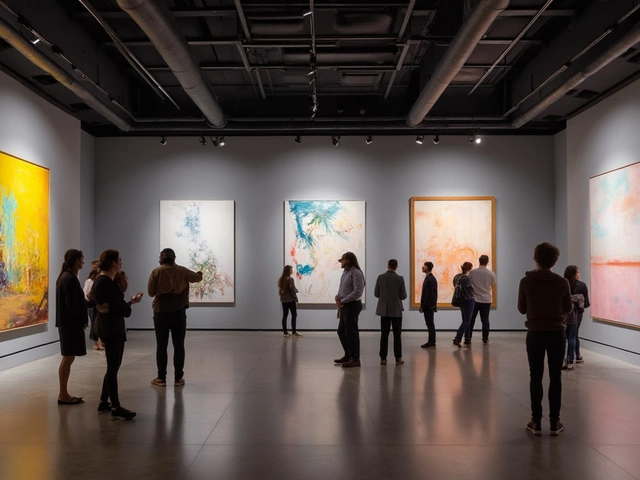The concept of the 63 arts is an ancient tapestry, weaving together the threads of tradition and creative expression. These arts include a variety of practices, from the visual to the performing, each offering a unique lens through which culture speaks and evolves. Stepping into this realm is like stepping into countless stories, each piece a chapter in humanity's artistic narrative.
As we journey through the origins and development of these arts, we see how they reflect the societies that cherished them. They've been adapted and reshaped, forming a bridge between the past and the present. Modern artists continue to draw inspiration from these traditions, infusing them with fresh perspectives and contemporary relevance.
Understanding these arts not only enriches our appreciation of contemporary culture but also underscores the enduring power of creativity across centuries. The legacy of the 63 arts continues to impart valuable insights and inspiration, urging us all to explore, create, and connect with our shared human heritage.
- Roots of the 63 Arts
- Adapting Ancient Practices
- Influence on Modern Artists
- Cultural Significance Today
Roots of the 63 Arts
The origins of the 63 arts trace back to ancient India where they were recognized as life skills necessary for cultivated individuals. These arts represented a holistic approach to education, encompassing both intellectual and creative development. They emerged within a context deeply embedded in cultural rituals, where art was not merely a form of expression but a vital fabric of societal norms and individual identity. Oftentimes, excellence in these arts was associated with spiritual enlightenment and societal honor, a reflection of their esteemed place in history.
This rich tapestry included diverse skills such as sculpting, painting, and dancing, alongside more unexpected practices like architectural design and carpentry. These were not merely hobbies for the elite but essential skills that enriched everyday life. The arts were often documented in ancient scriptures and texts like the Kama Sutra, which detailed various aspects of these practices, highlighting their educational and recreational value. Historically, these arts also played a pivotal role in educating the youth, preparing them for their roles in society by balancing creativity with discipline.
Delve into the past, and you'll find that these practices were intrinsically linked to religious and cultural ceremonies, embodying a deep connection to the divine. As such, proficiency in these arts was seen as a sacred duty. A notable reference to these historical practices comes from a translation by Sir William Jones in the 18th century, who noted, "In every nation some such forms will be found, but the particular combinations of them depend on the genius and manners of the people." This quote illustrates how the 63 arts adapted to different cultures while maintaining their core essence.
The enduring influence of these arts is evident in today’s contemporary art. As we explore their historical roots, it becomes apparent that they were not only about mastering techniques but also about fostering creativity that transcended time. Understanding the 63 arts provides a gateway into grasping the evolution of artistic expression and its impact on modern aesthetics, showcasing a legacy that continues to inspire artists globally.
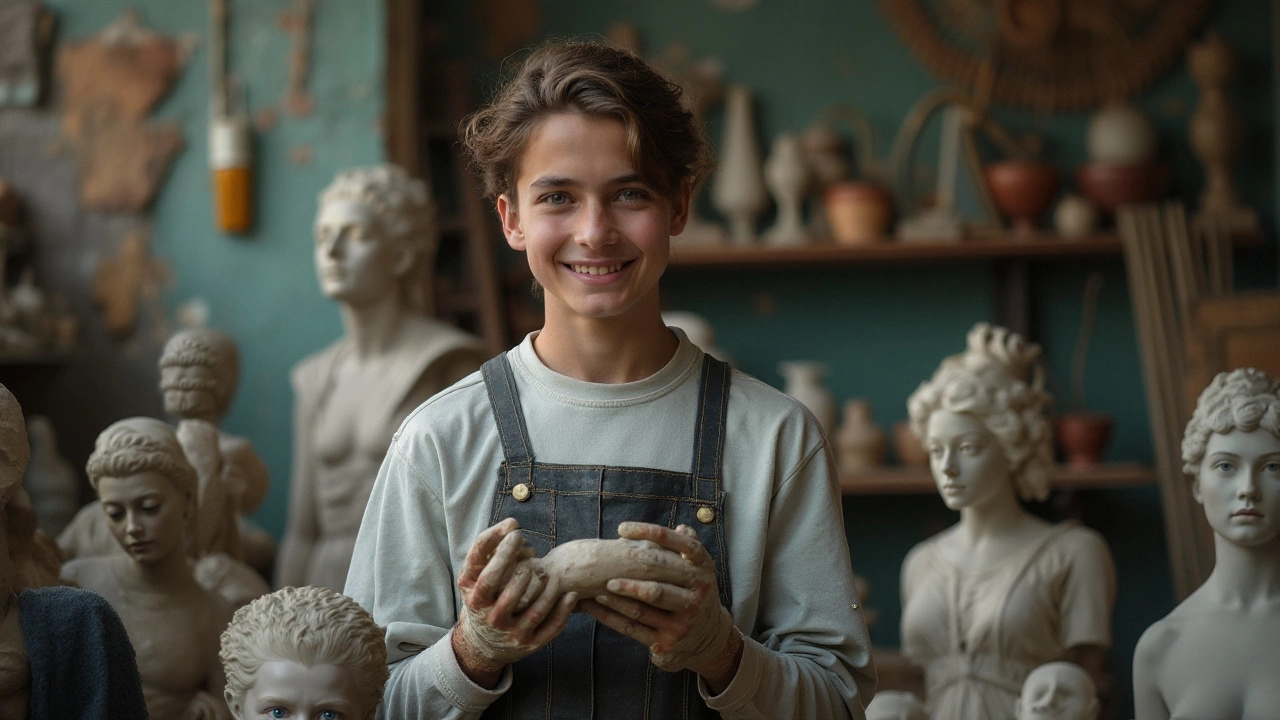
Adapting Ancient Practices
The journey of the 63 arts into contemporary culture is a fascinating tale of adaptation and reinvention. Artists are continuously finding ingenious ways to breathe new life into these venerable traditions, ensuring they remain relevant and compelling. While the precise origins of each art form might be steeped in mystery, their continued evolution reflects the creativity and resilience of the human spirit. These practices may have begun as rites or skills for daily life, but in today's artistry, they are dynamic forms of expression that resonate across cultures.
Take, for instance, the historical art of calligraphy, which can be traced back to diverse civilizations around the globe. In its ancient form, it was much more than just a method for writing; it was a revered skill associated with spiritual and philosophical significance. Nowadays, artists have innovatively expanded this art to create not merely written texts, but visual poems where words flow as if in a dance, conveying emotion and narrative without uttering a single spoken word. This approach exemplifies how traditional forms are infused with contemporary creativity, resulting in a symbiotic relationship between past and present.
Another compelling example is the practice of shadow puppetry. Originating from the folk tales of ancient cultures, it was used to narrate stories and impart moral lessons. Today, this practice has been revitalized with modern technology and storytelling techniques, even finding its way into digital media and interactive theater performances. Puppeteers now incorporate lights, sounds, and digital projections, transforming the traditional art form into a multidimensional experience that captivates modern audiences just as it did in ancient villages.
"The revival of ancient arts provides a beautiful bridge between different eras, allowing the future to embrace the wisdom and beauty of the past," remarks Dr. Carla Hess, a respected art historian.
In the realm of textiles, the art of weaving has seen remarkable adaptation as well. Once a fundamental skill required for everyday life, it now thrives in the hands of contemporary artists who approach it not just as a craft, but as a powerful medium for exploration of themes such as identity, heritage, and sustainability. Intricately woven installations in modern galleries speak of both a connection to ancient methodologies and a forward-thinking approach to artistic expression.
As we delve deeper, it’s evident that the 63 arts are not static relics of bygone times, but rather a vibrant source of inspiration and creativity for today's artists. By studying these arts and understanding their historical context, contemporary creators are not only preserving the skills but are also transforming them into catalysts for new narratives. This dynamic interplay continues to inspire audiences and challenges perceptions, highlighting the timeless allure and vitality that these traditional practices possess. As we look to the future, these arts remind us that the past is not a constraint, but rather a rich tapestry from which boundless creativity can be drawn.
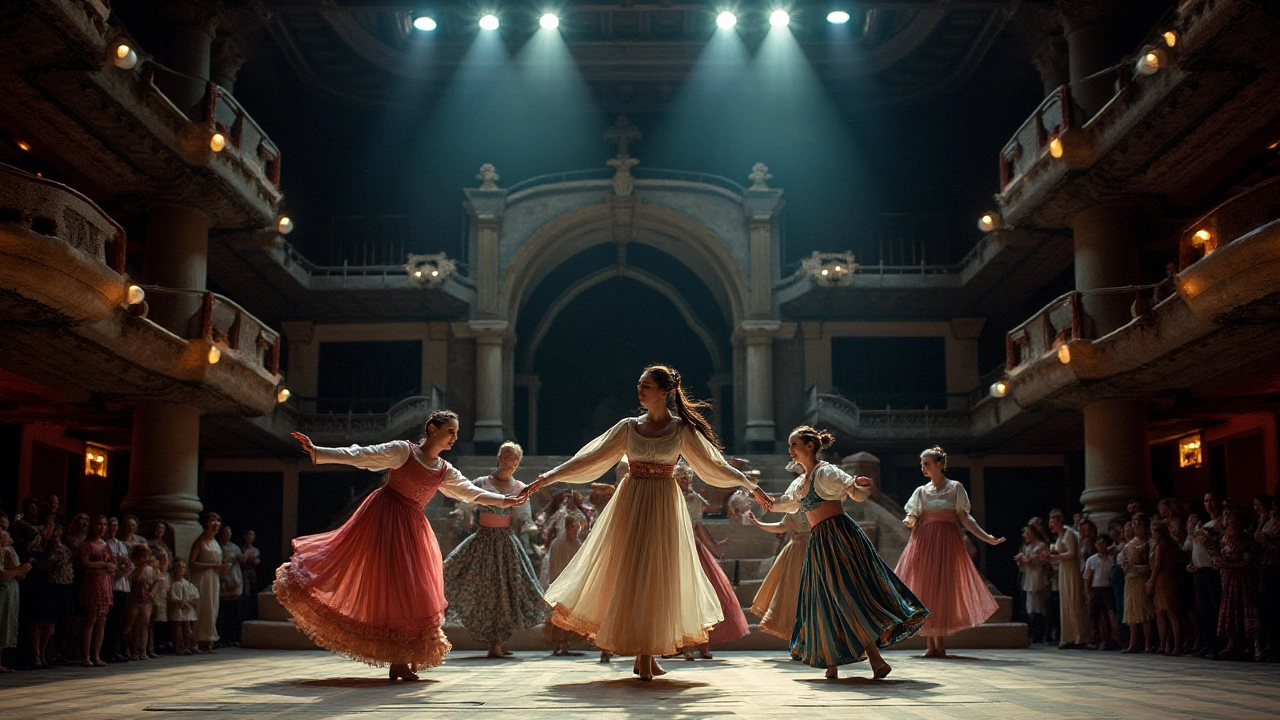
Influence on Modern Artists
The modern art landscape is a vast tapestry woven with the threads of numerous practices, ideals, and inspirations. Amongst these, the influence of the 63 arts shines brightly, guiding today's artists towards new horizons while grounding them in a deep-seated tradition. As they embark on the journey of creation, these contemporary artists don't just form new structures; they breathe life into the echoes of the past, embodying the essence of both cultural reverence and innovative spirit. The cross-pollination of ancient practices and modern sensibilities gives birth to a vibrant synergy that redefines boundaries, embracing innovation while honoring tradition.
The transformation of the 63 arts into contemporary narratives is not just a mere adoption but rather a dynamic reinterpretation. Artists take cues from historical perspectives, melding time-honored techniques with avant-garde experimentation, thus injecting freshness into their work and engaging wider audiences. A sculptor might infuse classical techniques of stone carving with modern materials like metal or plastic, thereby juxtaposing tradition with modernity. This fusion reflects the underlying cultural dichotomy, influencing how art is perceived and appreciated in the modern era. As contemporary painters traverse this transformative space, their canvases become arenas for dialogue between the antiquated whispers of the 63 arts and their own unique artistic voices.
Such profound impact is evidenced by artists like Marina Abramović, who draws inspiration from endurance and concentration—considered one of the ancient skills. Abramović often speaks about how ancient practices provide a framework within which boundaries can be pushed, cultivating performances that resonate on multiple levels. Her words encapsulate this beautifully:
“The 63 arts are more than techniques; they are philosophies inviting us into a world where every sensation becomes an art form.”These ancient modalities encourage artists to explore the limits of endurance and concentration, challenging them to redefine what performance can mean.
To quantify the ongoing influence of the 63 arts, we can consider global exhibitions where traditional crafts are revived and reimagined. A fascinating trend observed in art galleries includes exhibitions dedicated to transposing these ancient techniques into modern-day contexts, captivating audiences with their intricacy and relevance. For instance, data from the International Contemporary Arts Alliance shows a significant year-on-year rise in showcases that explore this intriguing juxtaposition:
| Year | Number of Exhibitions |
|---|---|
| 2022 | 18 |
| 2023 | 24 |
| 2024 | 31 |
These exhibitions aren’t just displays of art; they are transformational experiences that invite viewers to engage with the substance and context of each piece, bridging gaps between eras and igniting dialogue about the evolution of artistry. The combination of new ideas seeded from old traditions nurtures a burgeoning growth in cultural appreciation and artistic experimentation. Such a rich intermingling ultimately crafts a living legacy, ensuring that these venerable art forms continue to thrive within our contemporary milieu.

Cultural Significance Today
In today's dynamic world, the 63 arts continue to shape and influence contemporary societies in profound ways. These ancient skills offer a rich tapestry of cultural identity, providing a sense of continuity and connection to our shared human past. Artists across the globe are increasingly turning to these traditional practices, not as mere vessels of nostalgia, but as vibrant, evolving forms of cultural expression. This resurgence is seen not only in galleries and museums but also in digital platforms, where these arts are reimagined using modern technology, extending their reach to global audiences.
While some may perceive these arts as relics of a bygone era, they are far from being static or obsolete. Instead, they serve as touchstones for exploring identity and creativity in an increasingly interconnected world. Many contemporary artists treat these practices as a foundation upon which new and innovative pieces are built, merging classical techniques with modern themes and materials. For instance, the intricacies of traditional painting are often combined with digital media to create interactive installations that engage audiences in novel ways. This fusion of old and new invites us to explore questions about our identities, traditions, and the ways in which we wish to present ourselves.
The cultural renaissance of the 63 arts also brings about significant societal benefits. It acts as an educational tool, offering younger generations insight into their cultural heritage, while simultaneously fostering dialogue and understanding among diverse groups. By incorporating these arts into educational curricula, institutions promote an appreciation for the diversity of human expression and creativity. Such programs not only benefit students by broadening their perspectives but also help preserve these practices for future generations, ensuring they remain relevant and vibrant components of cultural life.
"The enduring legacy of the 63 arts reminds us of the vitality and resilience of cultural traditions in the face of modernity," notes cultural historian Dr. Leonard Phillips. "These arts have an incredible ability to adapt and thrive, serving as both mirrors and windows into our collective human experience."
As we stand on the cusp of new technological and societal developments, the ability of traditional arts to adapt and inform contemporary practice becomes ever more significant. The lessons embedded within these arts teach us about our past while providing a toolbox for creative exploration in the future. It is through the lens of these time-honored skills that we might find new ways to address the pressing challenges of our time, harnessing the strengths of history to innovate and inspire. In this light, the significance of the 63 arts extends well beyond aesthetics; they are repositories of wisdom and creativity that continue to shape our world in ways that are as dynamic and diverse as the cultures they spring from.
